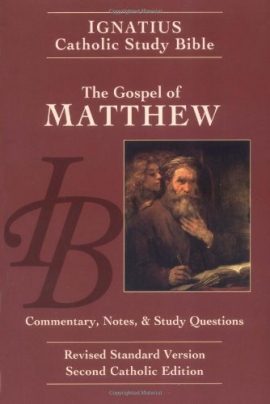Reading the Old Testament in the New: The Gospel of Matthew
Text Study
Lessons
About the Study
How did the New Testament writers read the Old Testament in light of the coming of Jesus Christ? This course offers an in-depth answer to that question, focusing on the use of the Old Testament in the Gospel of Matthew.
After looking at how first-century Jews interpreted the Law and the Prophets and studying patterns of interpretation found in Jesus and the New Testament writers, we’ll focus our attention on Matthew. Matthew makes more than 100 Old Testament references, ranging from direct quotes to subtle allusions. Through a close reading of many of these texts we’ll explore how the Old Testament forms an “implicit narrative” that is essential to understanding Matthew’s meaning and message.

Objectives
- To understand how the Old Testament is interpreted by Jesus and the New Testament writers.
- To learn the narrative structure and “implicit narrative” of Matthew’s Gospel and to understand how that implicit narrative is essential for understanding Matthew.
- To understand the Old Testament context for many of the specific sayings and events recorded in Matthew’s Gospel.
Materials
The primary text will be the Bible. And each lesson will provide links to biblical passages cited. In addition, the instructors recommend the following, which covers much of the material to be studied in this course:
The Gospel of Matthew
How to Use Our Courses
Whether you're studying Scripture for the first time, looking to take your studies to a higher level, or whether you're ready for advanced training, you've come to the right place!
Work at your own pace: All courses and each individual lesson will be archived and can be read or printed at any time.
Read each lesson as well as the Bible passages and other resources the instructor recommends. Taking notes will help you remember what you read. Then answer the study questions.


